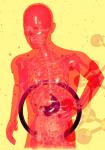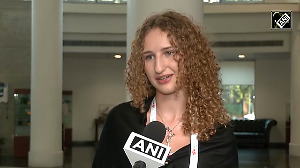When the Chinese government enacted its 'Great Shutdown' in Beijing, which compelled reduction of industrial activity by 30% and cut automobile use by half, athletes competing in the 2008 Summer Olympics could breathe a little easier, literally.
But where'd all the smog go?
That's the question occupying the mind of V Ramanathan, professor at the University of California's renowned Scripps Institution of Oceanography.
Ramanathan, who helped revolutionise the study of so-called atmospheric brown clouds through the use of specially equipped unmanned aircraft that enable researchers to form dimensional profiles of clouds and other atmospheric masses, has brought his team of researchers to Beijing to search for an answer.
That's because the 2008 Beijing Olympics provide Ramanathan a once-in-a-lifetime opportunity to observe, measure and analyse how the atmosphere responds when a mega-metropolis reduces its everyday emissions. The treasure trove of data has been deemed so important that the United States National Science Foundation, the Chinese Government and the South Korean Government are all on board and supporting the project, called Cheju ABC Plume-Monsoon Experiment (CAPMEX).
The unmanned, data-gathering flights originate at the South Korean island of Cheju, located about 1,165 kilometers southeast of Beijing, and fly towards inland China, in the projected path of pollution plumes originating in various cities in China including Beijing. The flights are expected to run through September 30.
So while the rest of the world cheers on their favourite athletes, Ramanathan's unmanned aircrafts are overhead, tracking pollution leaking out of China through atmospheric brown clouds. Miniaturised instruments on the aircraft measure a range of properties such as the quantity of soot and size of the aerosols upon which cloud droplets form. The instruments also record variables such as temperature, humidity and the intensity of sunlight that permeates clouds and masses of smog.
That information will be combined with concurrent measurements being made by satellites and on-ground observatories, in hopes of forming a more complete picture of how the atmosphere reacts when you turn the pollution 'off'.
The answer might go a long way towards teaching us about man-made global warming, and what, if anything, we can do to stop it.
In a statement released by Scripps Institution of Oceanography, Ramanathan echoed this sentiment. "By determining the effects of soot reductions during the Olympics on atmospheric heating, we can gain much needed insights into the magnitude of future global warming."







 © 2025
© 2025